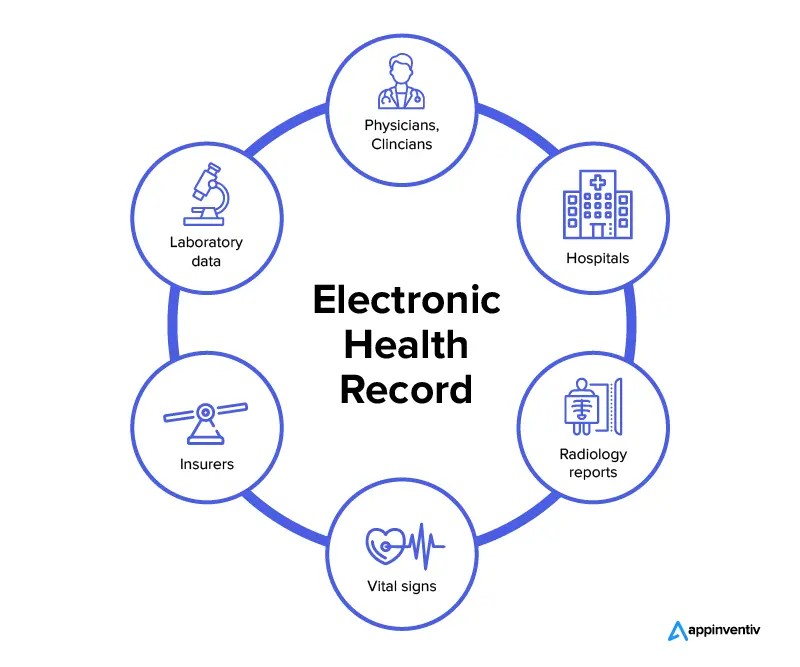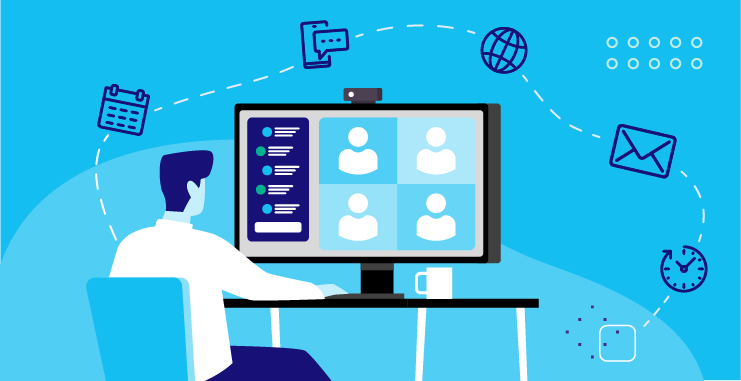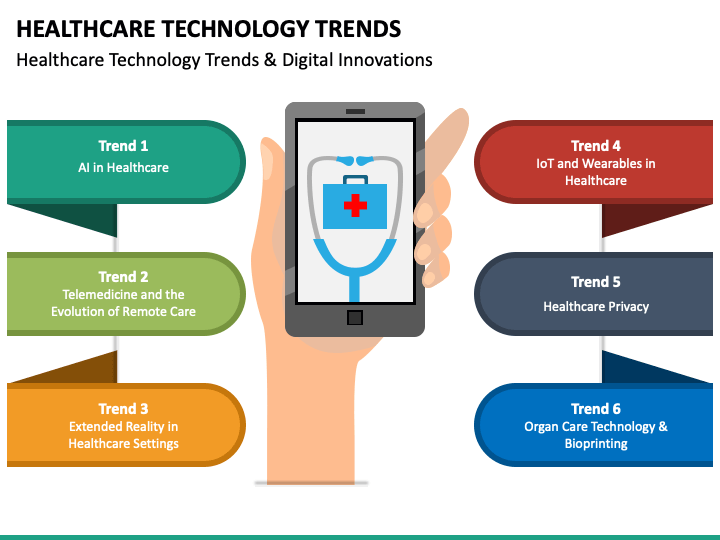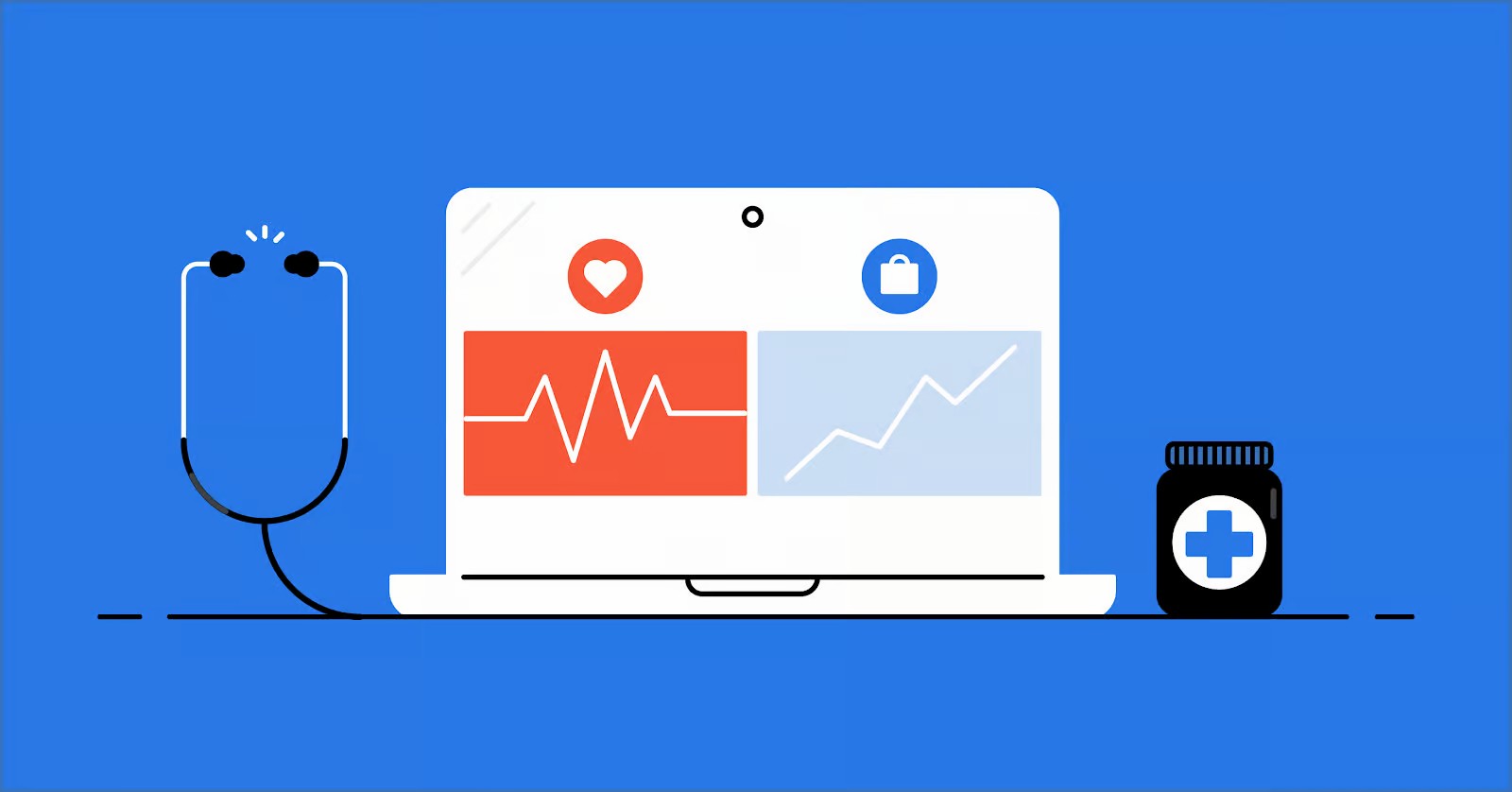Explanation of Modern Healthcare Software Development
Healthcare software development is nothing but software engineering that specializes in designing, developing and maintaining software tools that specifically assist medical professionals and patients alike. These include software used in medical care, medical administrative operations, diagnostics, research and more.
In contrast to general software applications, custom healthcare software development need to align with heavy regulations and strict compliance, robust workflows and continuously evolving health IT ecosystems. The standards of usability, security and accessibility are also high. The apps must also be HIPAA-compliant in the United States, GDPR in the EU and sometimes also require FDA approval under certain categories.
There are many categories of existing healthcare systems, divided on the basis of users such as, medical professionals, administrators, patients etc. These often interoperate among each other to create smooth ecosystems. Therefore, robust planning, research, testing and quality assurance methodologies are required to make them successful.

Importance of the Custom Software Development Lifecycle (SDLC) in Healthcare Industry
When it comes to a domain as sensitive and regulated as the healthcare industry, the custom healthcare software development cycle or SDLC makes up the backbone of successful healthcare software projects. The SDLC defines a reusable framework that can be used as a guide to turn a simple idea into a successful, secure one and user friendly and compliant software solution.
One of the most beneficial points of a well built SDLC is the operational efficiency it brings through the foresight to each of the phases in development. Through it, teams will be able to predict many challenges before they even face them. Anticipating and documenting such challenges ensure alignment with all goals, requirements, milestones and stakeholders. Simply said, SDLC’s minimize risks and improve the project success rate while you focus on delivering your reliable and safe healthcare solution.
At Kanda Software, we rely on a healthcare software developer that adapts an agile SDLC ensuring rapid iterations, regulatory compliance, user feedback loops, and on-time delivery—especially critical in projects involving patient care or real-time medical data exchange.
Types of Software Solutions in the Healthcare Sector
Kanda Software provides a wide variety of medical software development applications that are developed based on important industry needs. Some of the most important categories changing healthcare delivery and management include:
Electronic Health Records (EHR) with Regulatory Compliance
EHR systems are the digital equivalent of a patient's clinical record, in the healthcare sector. They store vital information such as diagnosis, lab results, medical history, medications, allergies, and physician's notes allowing ease in managing patient records. Modern EHRs also integrate with laboratory systems, imaging equipment, e-prescribing, and decision support systems with AI.
Kanda constructs cloud-based, interoperable EHR systems with powerful search, real-time charting, and healthcare professional-configurable digital health dashboards. Our custom healthcare software development solutions for healthcare data management are designed with usability in mind enabling healthcare providers to have more time for patient time and less time for patient data entry.

Telemedicine Platforms
Remote care has evolved into digital health from video conferencing technology to complete virtual care platforms. These include scheduling platforms, real-time consultations, Medical Education, EMR integration, digital prescriptions, and follow-up automation.
Our telemedicine offerings feature end-to-end encryption of the links, mobile and wearable device support, and scalable cloud infrastructure. These are essential to rural outreach, post-discharge monitoring, and pandemic preparedness.

Mobile Health (mHealth) Applications
mHealth tools allow for more proactive healthcare management, enabling patients to monitor diseases, interact with healthcare providers, and schedule visits. They are diagnostic tools and portals to patient data for their medical caregivers.
Kanda designs safe, cross-platform healthcare software solutions for remote monitoring, chronic disease management, fitness, medication compliance, and well-being coaching—in patient self-management and provider activation that simplifies provision of care and improves patient outcomes.
Clinical Decision Support Systems (CDSS)
CDSSs utilize algorithms and current data to assist healthcare providers in making evidence-based decisions. Such examples are to remind health care providers of drug-drug interactions or to warn of abnormal lab results.
Kanda uses AI in CDSS tools that browse patient history, clinical guidelines, and literature to generate cues for healthcare providers to enhance safety and outcomes.
Practice and Hospital Management Systems
Practice management systems manage billing, coding, scheduling, inventory, HR, and compliance activity for healthcare organizations, clinics and hospitals. Integrated solutions increase productivity and minimize administrative burden.
Kanda crafts these systems to fit varying practice sizes, specialties, and compliance needs per country—fostering departmental concord in functions.
Medical Billing and Insurance Portals
The most important pain point for providers is revenue cycle management. Providers lose revenue in the millions of dollars because of coding errors, billing errors, and denials.
Kanda's outstanding patent bill payment solution simplifies claim entry, denial processing, and cash analysis—enabling clients to optimize collections and cash flow.
Tailored Healthcare Software Development for Healthcare Providers
Why Custom Solutions Work Better
Off-the-shelf medical software is generic, hard to tailor, and can have extraneous functions that bog down systems. Custom solutions, on the other hand, exactly addresses a physician's business requirements, clinical objectives, and user expectations.
Kanda's =offers customized software development services with advanced technologies in healthcare with clinical knowledge, regulatory insight, and technical expertise. From ambulatory solutions to AI-diagnosis, our experts work with clients to co-develop scalable and future-proof platforms.
Unique Characteristics of Custom Healthcare Software Development Process
Custom health software is developed from scratch to reflect how your company operates. It's interoperability-centric, supports compliance mandates, and provides unmatched flexibility. It features:
- Modular, flexible workflows mapped to clinical processes
- Role-based data access and audit logs
- Smart dashboards and real-time notifications
- Embedded analytics and AI modules
- Responsive UI/UX on devices
- Secure Data exchange
- Seamless Service Delivery
Such precision leads to software that not only satisfies but surpasses the needs of the healthcare sector working practices, eliminating bottlenecks and improving quality of care.
Discover our customized solutions designed to address your institution's individual DNA.
What Development Companies need to Keep in Mind When Choosing or Creating a Solution
In comparing building your own product or custom development partners, you need to consider:
- Regulatory Readiness: Ensure that the solution will be certification- and audit-worthy.
- Scalability: Does the system grow with the growth of your company?
- Support and Maintenance: Will there be enhanced service delivery and support for bugs and upgrades?
- Patient Data Security: Does it include encryption, role-based access, and secure APIs?
If you're not certain where to start, Kanda offers custom healthcare software development services and strategic consulting to help you evaluate your environment and suggest the optimal technical roadmap
Phases of Healthcare Software Development
At Kanda, the lifecycle of SDLC of our custom healthcare software solutions is formal but not rigid, with structure and flexibility in every engagement. Here below is a close look at how we handle the lifecycle:
Discovery, Planning and Compliance with Healthcare Regulations
We begin by finding out your requirements, workflows, constraints, and compliance requirements. Business analysts take stakeholder feedback, review existing systems, and create a functional specification. Wireframes are designed to see major interfaces and user flows.
One of the key things in this phase is identifying integration points, threats, and tech stacks. Compliance professionals identify which regulations for medical organizations the system must comply with (HIPAA, GDPR, FDA, etc.).
UX/UI Design
Good health care design is intuitive navigation, accessible layout, and rapid load times. We create wireframes, high-fidelity mockups, and clickable prototypes that represent the cognitive load of clinical environments and on field care delivery.
By involving healthcare providers and patients early in the design process, we reduce resistance and increase diagnostic accuracy and adoption rates.
Find out more about the importance of UX and UI for healthcare applications.
Future Growth
Agile development begins in two-week cycles. Our engineers develop front-end interfaces, backend services, API integrations, and mobile applications. Features are prioritized based on business objectives and tested continuously for future growth. We employ test-driven development (TDD), CI/CD pipelines, and secure coding practices to deliver speed, stability, and security.
Quality Assurance (QA)
Before launch, the software undergoes rigorous QA processes:
- Functional testing validates that everything is working as intended with streamline operations.
- Security testing confirms vulnerabilities and weaknesses in compliance with healthcare regulations.
- Performance testing exercises responsiveness under load.
- User acceptance testing (UAT) involves healthcare providers and admins in actually testing the system in real practice settings.
Deployment and Support
Kanda is one of the best healthcare software development companies that supports DevOps deployment to AWS, Azure, on-prem, or hybrid. We provide 24/7 ongoing maintenance, bug fixes, and scheduled upgrades after go-live. We also perform yearly compliance audits and performance optimization recommendations.
Cost of Healthcare Software Development in 2025
Determining the cost of developing healthcare software in 2025 requires a prudent estimation of multiple factors that bear influence. It is not one-size-fits-all, yet businesses must have an idea of what influences the cost of the project and how to allocate investment for optimal return.
Most Important Factors That Influence Pricing
Project Complexity:
The more complicated the software features and the larger the number of users, the higher the amount of engineering involved. For a simple example, a basic patient portal is quite different in size and cost compared to an enterprise-wide, integrated clinical decision support system.
Compliance Requirements:
Compliance mechanisms such as HIPAA (Health Insurance Portability and Accountability Act), GDPR (General Data Protection Regulation), and FDA classifications impose layers of design constraint and documentation burden in custom solutions. Logging, audit requirements, and encrypted storage of patient data take more development time.
Data Interoperability:
For integration with existing legacy systems, third-party APIs, EHRs, wearables, or insurance platforms, extra architecture planning, middleware design, and testing are needed especially while implementing HL7 or FHIR standards.
AI adoption in modern healthcare:
AI predictive analytics modules, machine learning models, natural language processing, and image analysis have to be specially designed and trained, and it is expensive.
User Interface and Accessibility Requirements:
Intuitive design is not a nicety in healthcare industry. Designing a cohesive overall user experience on web, mobile, and desktop platforms—while accommodating WCAG accessibility standards—takes skill and several iterations of design.
Hosting and Infrastructure:
Regardless of whether you opt for cloud hosting, on-premises deployment, or a hybrid of the two, costs can vary depending on scalability needs, redundancy, and uptime guarantees.
Ongoing Support and Maintenance:
After release, security patch updates, feature upgrades, compliance audit, and system monitoring must be performed to keep it running and trustworthy.
At Kanda, we deliver transparent estimates based on clearly defined scope, avoiding scope creep while offering flexibility for future enhancements with a strong and proven track record.
Trends in Healthcare Software Development

AI and ML in Predictive and Personalized Medicine
AI transforms healthcare and we have seen that happen very quickly in 2025. Digital health solution software is alerting at-risk patients to chronic disease, signaling anomalies in imaging scans, and predicting readmission events. AI models with access to thousands of medical cases to learn from can now recommend diagnostics and treatments more accurately by leveraging augmented and virtual reality.
In addition, custom healthcare software personalization engines analyze genetic information, habits, and treatment response to recommend tailored direction of treatment bringing about a different kind of digital transformation. As an illustration, pharmacogenomic algorithms can prescribe which medications are most likely to succeed with a specific patient.
These technologies reduce errors, help alleviate burdened healthcare professionals, and support value-based care models. Their deployment does depend, however, on having clean training data, ethical guardrails, and ongoing model testing. Still in its infancy, there is a lot more to see in AI as healthcare software evolves.
Expansion of Telemedicine and Remote Monitoring
Virtual care is no longer adjunctive—it's necessary. Especially in the post-COVID-19 world, healthcare systems embraced telemedicine to limit in-clinic visits and prevent contagion. What was originally adopted in crisis mode has become a long-term strategy.
Remote Patient Monitoring (RPM) technology such as glucose meters, smart inhalers, cardiac monitors, and wearable ECGs capture live health information. The information is transmitted securely to provider portals, where abnormalities can trigger alerts, follow-up treatment, or emergency care.
Telehealth platforms now include appointment scheduling, EHR access, auto-transcripts, and e-prescribing. The ease brings accessibility to the underserved and reduces costs.
Kanda's telemedicine and RPM solutions are built to be mobile-enabled, scalable, and HIPAA-compliant, supported by secure data-sharing cloud infrastructure.
Blockchain for Data Storage of Medical Records and Patient Data Security
Blockchain in healthcare is resolving age-old challenges of health data fragmentation, consent management, and auditability. Blockchain enhances transparency while protecting information from data breaches and unauthorized tampering by dispersing information across impenetrable ledgers.
Decentralized identity systems allow patients to have ownership of their medical records and offer selective sharing with healthcare professionals or researchers. Smart contracts can be utilized to automate claims and implement access control policies.
Though still in its early stages in terms of uptake, Kanda is creating pilot programs for blockchain-based custom software solutions and health data-sharing platforms.
Mobile App Development-First Health Experiences
Smart phones are the doors to digital transformation for health care. From medication reminders, fitness tracking, provider messages, to mental health resources, custom healthcare software apps bring patients where they are—on their phones.
Kanda's seamless integration with mobile offerings focus on light weight, safe login, biometric authentication, and real-time synchronization. Our applications support a range of users, from tech-savvy teens to elderly patients with big font sizes and voice assistance.
From a business perspective, mobile apps also offer valuable analytics—user retention, engagement, and feedback—that can guide product optimization and personalization efforts.
UX/UI as a Strategic Differentiator
In medicine, bad design is not just frustrating—it is hazardous. A messy interface can result in errors in medication prescribing or overlooking symptoms. That is why UI/UX is not just about looks; it is about safety, accessibility, and simplicity.
Kanda provides seamless integration of clinical workflows into design, conducting user research with nurses, doctors, and patients to establish a baseline level of usability pain points. Our interfaces aim for zero-click overload, intuitive navigation, and consistency across devices.
For more, read about the importance of UX and UI for healthcare applications.
Conclusion
 The 2025 health care software development business is one of acceleration—accelerated growth, intensified regulation, and heightened expectations. Software is not confined to the back office as an administrative function; it occupies the foreground for diagnostics, for therapy, for communication, for care coordination.
Healthcare administrators and technology executives must be ready to make this jump by investing in technology that is scalable, secure, and personalized. The right software doesn't just make operations more efficient—it saves lives, empowers patients, and drives competitive advantage.
Kanda Software is the partner of choice for this initiative. With extensive experience in healthcare domain expertise, robust engineering competency, and a compliance orientation, we co-design solutions that surpass technical and business requirements. From AI-powered diagnostics to HIPAA-compliant mHealth apps, our tailored development services are future-proof.
Let's build the future of healthcare together. Connect with us to begin your path.
The 2025 health care software development business is one of acceleration—accelerated growth, intensified regulation, and heightened expectations. Software is not confined to the back office as an administrative function; it occupies the foreground for diagnostics, for therapy, for communication, for care coordination.
Healthcare administrators and technology executives must be ready to make this jump by investing in technology that is scalable, secure, and personalized. The right software doesn't just make operations more efficient—it saves lives, empowers patients, and drives competitive advantage.
Kanda Software is the partner of choice for this initiative. With extensive experience in healthcare domain expertise, robust engineering competency, and a compliance orientation, we co-design solutions that surpass technical and business requirements. From AI-powered diagnostics to HIPAA-compliant mHealth apps, our tailored development services are future-proof.
Let's build the future of healthcare together. Connect with us to begin your path.
Frequently Asked Questions
What is healthcare innovation in 2025?
Healthcare innovation in 2025 encompasses technologies like AI, blockchain, IoT, and genomics to enhance diagnosis, personalize care, and streamline operations. It's about combining scientific advances and digital technologies in the and healthcare services in a clean development process to create safer, more efficient, and more inclusive healthcare systems.
What is the fastest-growing health tech?
AI-driven analytics and telehealth products lead the way in growth. Because they can automate, enhance clinical decision support, and enhance patient care, they lead the way in digital strategy today.
Which software is used the most in medicine?
Electronic Health Record (EHR) systems continue to be the most common. Remote monitoring applications, mHealth technology, and artificial intelligence (AI)-based diagnosis assistants are rapidly catching up, however, as healthcare decentralizes and becomes data-focused.
What is Web3 in healthcare?
Web3 introduces decentralized technologies like blockchain and smart contracts to healthcare services, that enhances patients data ownership and provide consent. Web3 facilitates interoperability, open audit trails, and collaborative research without losing data privacy.
Why is custom healthcare software development important?
Because each healthcare organization needs multiple software solutions with its own processes, regulations, and patient population. Custom software development precisely fits these requirements, is free from feature creep, and offers long-term scalability, security, and compliance with healthcare regulations—resulting in a better outcome than generic platforms.
In what way does data security in healthcare software enhance patient trust?
Healthcare data security protects sensitive patient information—medical history, diagnoses, insurance coverage—against unauthorized access, theft, and tampering while improves patient outcomes. Secure systems encrypt data, use multi-factor authentication, role-based access control, and audit trails to limit access or modification. Patients are more likely to engage digitally—whether through portals, mobile apps, or telemedicine—when they know their data storage is safeguarded by rigorous standards and compliant systems which enhances patient care. In 2025, good data security is no longer a regulatory expectation—it's a basis of patient trust.





 The 2025 health care software development business is one of acceleration—accelerated growth, intensified regulation, and heightened expectations. Software is not confined to the back office as an administrative function; it occupies the foreground for diagnostics, for therapy, for communication, for care coordination.
Healthcare administrators and technology executives must be ready to make this jump by investing in technology that is scalable, secure, and personalized. The right software doesn't just make operations more efficient—it saves lives, empowers patients, and drives competitive advantage.
Kanda Software is the partner of choice for this initiative. With extensive experience in healthcare domain expertise, robust engineering competency, and a compliance orientation, we co-design solutions that surpass technical and business requirements. From AI-powered diagnostics to HIPAA-compliant mHealth apps, our tailored development services are future-proof.
Let's build the future of healthcare together. Connect with us to begin your path.
The 2025 health care software development business is one of acceleration—accelerated growth, intensified regulation, and heightened expectations. Software is not confined to the back office as an administrative function; it occupies the foreground for diagnostics, for therapy, for communication, for care coordination.
Healthcare administrators and technology executives must be ready to make this jump by investing in technology that is scalable, secure, and personalized. The right software doesn't just make operations more efficient—it saves lives, empowers patients, and drives competitive advantage.
Kanda Software is the partner of choice for this initiative. With extensive experience in healthcare domain expertise, robust engineering competency, and a compliance orientation, we co-design solutions that surpass technical and business requirements. From AI-powered diagnostics to HIPAA-compliant mHealth apps, our tailored development services are future-proof.
Let's build the future of healthcare together. Connect with us to begin your path.



